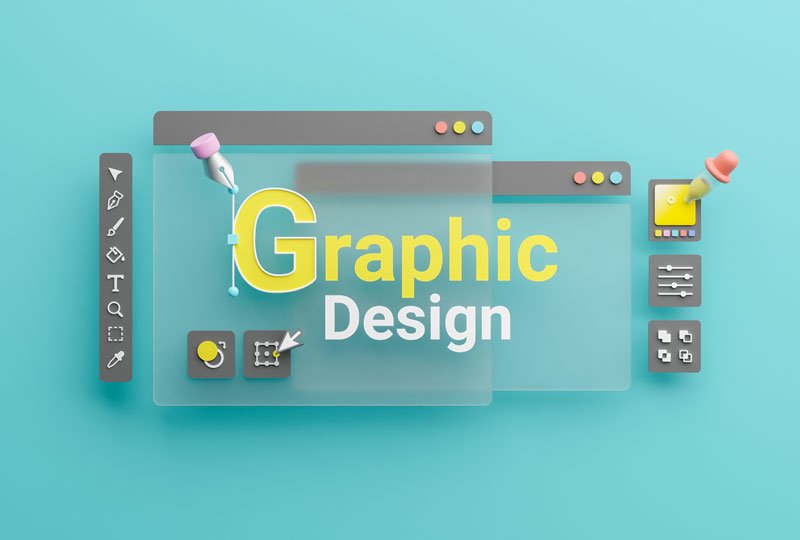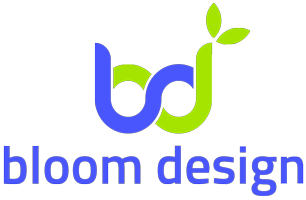How Graphic Design Works: A Comprehensive Guide
Graphic design is an integral part of our visual world, influencing everything from advertising and branding to digital interfaces and product packaging. But how does graphic design actually work? What are the most lucrative jobs in this field? And with AI on the rise, is the future of graphic design at risk? Let’s dive into these questions and more in this comprehensive guide.

What is Graphic Design?
At its core, graphic design is the art and practice of planning and projecting ideas and experiences with visual and textual content. This involves creating visual content to communicate messages, combining elements like typography, imagery, color, and layout to produce designs that capture attention, convey information, and evoke emotions.
How Graphic Design Works
Graphic design involves a multi-step process that typically includes research, concept development, design execution, and final delivery. Here’s a detailed breakdown:
Research and Discovery:
- Understanding the Client’s Needs: This initial phase involves gathering information about the client’s business, target audience, goals, and any existing branding guidelines.
- Market Analysis: Studying competitors and industry trends to identify opportunities and design strategies that stand out.
Conceptualization:
- Brainstorming: Generating a range of ideas through sketches, mind maps, and mood boards.
- Creating Drafts: Developing rough drafts and mock-ups to visualize the concepts.
Design Development:
- Digital Execution: Using graphic design software like Adobe Photoshop, Illustrator, or free tools like GIMP and Inkscape to create detailed and polished versions of the selected concepts.
- Typography and Color Selection: Carefully choosing fonts and color schemes that enhance the design’s message and appeal.
Feedback and Revisions:
- Client Collaboration: Presenting the designs to clients, gathering feedback, and making necessary revisions to ensure the design aligns with the client’s vision and objectives.
Finalization:
- Preparing Final Files: Ensuring all design elements are in place and preparing the final files for print, digital publication, or other forms of distribution.
- Quality Check: Conducting a final review to catch any errors and ensure the highest quality.
What Graphic Designer Jobs Pay the Most?
If you’re considering a career in graphic design, it’s helpful to know which roles offer the highest earning potential. Here are some of the top-paying positions in the industry:
Creative Director:
- Role: Overseeing the entire creative process, from concept to execution, and managing a team of designers.
- Salary Range: $90,000 to $180,000 annually.
- Skills Required: Leadership, strategic thinking, and extensive design experience.
Art Director:
- Role: Managing the visual style and images in magazines, newspapers, product packaging, and movie and television productions.
- Salary Range: $80,000 to $120,000.
- Skills Required: Strong visual and conceptual abilities, plus project management.
UX Designer:
- Role: Focusing on user experience design, including the usability and functionality of digital products.
- Salary Range: $75,000 to $110,000.
- Skills Required: User research, wireframing, prototyping, and usability testing.
Brand Identity Designer:
- Role: Specializing in creating and maintaining brand logos and visual identities.
- Salary Range: $70,000 to $100,000.
- Skills Required: Logo design, brand strategy, and a keen eye for detail.
Freelance Graphic Designer:
- Role: Working independently on various projects for different clients, allowing for flexibility and potentially higher earnings.
- Salary Range: Varies widely based on experience, specialization, and client base, with top freelancers earning six figures.

When Did Graphic Design Start?
The origins of graphic design can be traced back to early human history, with examples of visual communication appearing in cave paintings and ancient manuscripts. However, graphic design as we know it began to take shape in the late 19th and early 20th centuries. Here are some key milestones:
- Arts and Crafts Movement (1880-1910): This movement, led by figures like William Morris, emphasized craftsmanship and design in response to industrialization.
- Bauhaus School (1919-1933): Founded by Walter Gropius in Germany, Bauhaus brought together art, design, and technology, profoundly influencing modern design principles.
- Coining of the Term ‘Graphic Design’ (1922): William Addison Dwiggins, a book designer, first used the term to describe his work.
- Post-War Era (1945-1960): The rise of advertising and corporate branding led to the professionalization of graphic design.
- Digital Revolution (1980s-Present): The advent of computers and design software revolutionized the field, making it more accessible and versatile.

Which Graphic Design Software is Free?
There are several free graphic design software options that cater to both beginners and professionals. Here are some of the best:
GIMP (GNU Image Manipulation Program):
- Features: Comparable to Adobe Photoshop, GIMP offers advanced photo editing, image composition, and graphic design tools.
- Best For: Photo retouching, image composition, and graphic design.
Inkscape:
- Features: A vector graphics editor similar to Adobe Illustrator, Inkscape is great for creating logos, icons, and illustrations.
- Best For: Vector graphic design, including logos and technical illustrations.
Canva:
- Features: A user-friendly tool for creating social media graphics, presentations, posters, and other visual content. It offers a vast library of templates and elements.
- Best For: Quick and easy design projects, especially for social media and marketing materials.
Krita:
- Features: A professional-grade painting program, Krita is ideal for digital painting and illustration, with a range of brushes and tools.
- Best For: Digital painting, concept art, and illustrations.
Gravit Designer:
- Features: A versatile vector graphic design app that works in the browser or as a desktop app, offering a range of tools for both beginners and pros.
- Best For: Vector graphic design and UI/UX design.
Will Graphic Design Be Replaced by AI?
The rise of artificial intelligence (AI) has transformed many industries, and graphic design is no exception. AI tools can automate repetitive tasks, generate design suggestions, and even create entire layouts. However, the fear that AI will completely replace graphic designers is largely unfounded. Here’s why:
Creativity and Emotion: AI lacks the human ability to infuse designs with creativity and emotional depth. Graphic design is not just about making something look good; it’s about telling a story and evoking emotions, which requires a human touch.
Complex Problem-Solving: Design challenges often require nuanced understanding and innovative solutions that AI can’t fully grasp. Human designers can think outside the box and consider the broader context in ways AI cannot.
Client Interaction: Working with clients involves understanding their unique needs, preferences, and feedback. This interpersonal aspect of design is something AI cannot replicate.
Ethical and Cultural Sensitivity: Designers must be aware of cultural contexts and ethical considerations, tailoring their work to avoid insensitivity or controversy. AI lacks this level of understanding and discretion.
AI as a Tool, Not a Replacement: Rather than replacing designers, AI is more likely to become a valuable tool that enhances the design process. AI can handle tedious tasks, allowing designers to focus on the creative aspects of their work.
